15 Snake Plants Perfect for Low-Light and Easy Care Spaces
Snake plants are popular houseplants known for their hardiness and unique leaf shapes. They come in many different types, each with its own look and care needs. People often choose them to add greenery to their homes without a lot of fuss.

This article covers 15 snake plant varieties, helping readers understand their differences and how to care for them. It offers simple guidance to pick the right snake plant for any space, making it easier to enjoy these easy-to-grow plants.
1) Sansevieria trifasciata (Mother-in-Law’s Tongue)

Sansevieria trifasciata, commonly known as Mother-in-Law’s Tongue, is a popular houseplant known for its upright, sword-shaped leaves. The leaves are typically dark green with lighter horizontal stripes and often have yellow edges.
This plant is very hardy and can tolerate low light, drought, and irregular watering. It is a slow grower and prefers well-drained soil. Because of its toughness, it is often recommended for beginners.
Mother-in-Law’s Tongue was reclassified in 2017 as Dracaena trifasciata but is still widely called by its old name. It originates from tropical West Africa and can grow up to 90 cm tall.
It adds a clean, vertical element to any room and requires minimal care. It thrives indoors but can also be grown outdoors in suitable climates. More detailed care tips are available in the Mother-in-Law’s Tongue care guide.
2) Dracaena trifasciata ‘Hahnii’ (Bird’s Nest Snake Plant)

Dracaena trifasciata ‘Hahnii’, commonly called the Bird’s Nest Snake Plant, is a small and compact variety. It grows in a tight rosette shape, resembling a bird’s nest, with short, wide leaves. The leaves are dark green with lighter green stripes.
This plant is popular for indoor spaces because it stays small, usually between 15 and 25 cm tall. It fits well on desks, shelves, or windowsills where space is limited. It comes in different color patterns, some with variegated leaves.
Care for the Bird’s Nest Snake Plant is simple. It prefers indirect light but can tolerate low light. Water it sparingly, letting the soil dry out completely before watering again. The plant is drought tolerant and low maintenance, making it ideal for beginners.
It also helps improve indoor air quality, similar to other Sansevieria varieties. The Bird’s Nest Snake Plant originates from West Africa and belongs to a group known for tough, durable foliage. Learn more about caring for the Bird’s Nest Snake Plant at Gardenia or Plant Care Today.
3) Sansevieria cylindrica (Cylindrical Snake Plant)
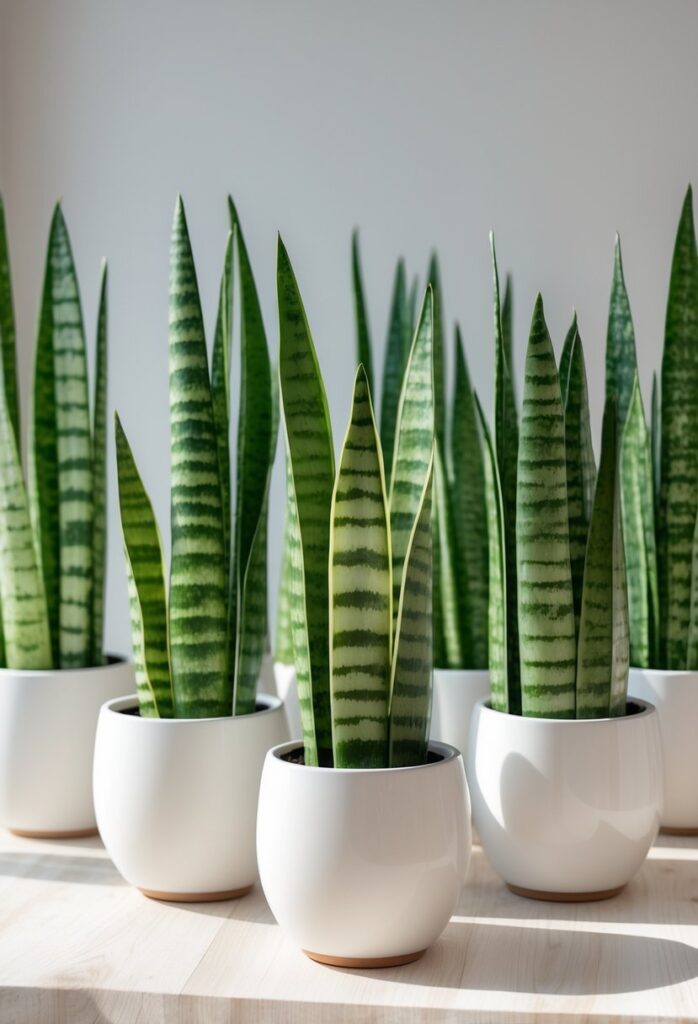
Sansevieria cylindrica is a unique type of snake plant known for its long, round, spear-like leaves. These leaves can grow up to 7 feet tall and are about 1.5 inches thick. This plant is native to Angola and is sometimes called the African Spear Plant.
It is a succulent, which means it stores water in its leaves. This helps it survive drought conditions. The plant is easy to care for. It grows well in bright, indirect light but can also tolerate lower light levels.
Sansevieria cylindrica is drought-tolerant and does not need frequent watering. Overwatering can cause root rot. It prefers well-draining soil and should be allowed to dry out between waterings.
This snake plant adapts well to different environments. It is slow-growing but can reach tall heights over time. Its striking cylindrical leaves add an interesting visual element to homes or offices.
For more details on its care, visit the Sansevieria cylindrica care guide.
4) Sansevieria kirkii (Star Sansevieria)
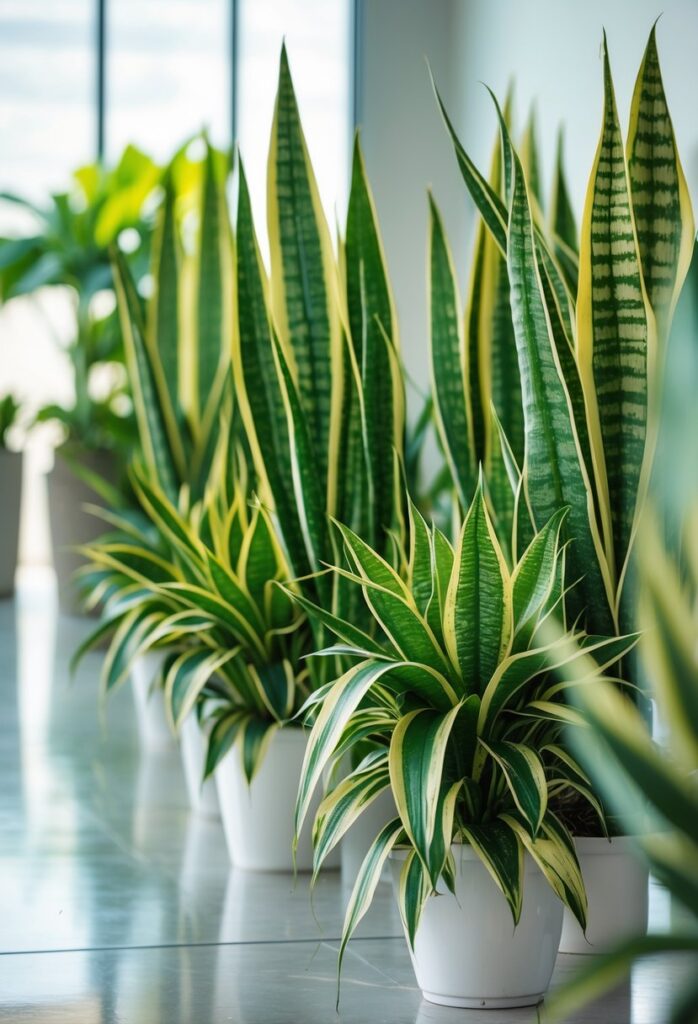
Sansevieria kirkii, also called Star Sansevieria, is a tough and unique plant native to East Africa. It grows in a clumping shape, reaching 2 to 5 feet tall. Its leaves are stiff and spiky with a mottled pattern, giving it a striking, almost pineapple-like look.
This plant is well-known for being easy to care for. It can survive in low light and does not need much water. It is a good choice for beginners or those who want a low-maintenance indoor plant.
Sansevieria kirkii prefers bright, indirect light but can adapt to shade. It thrives in well-draining soil and should be watered only when the soil is dry. Overwatering can cause root problems.
Because of its hardiness, it can also be grown outdoors in warm climates. Its air-purifying qualities make it a popular option for homes and offices. Learn more about caring for this plant at the Sansevieria Kirkii Care Guide.
5) Sansevieria masoniana (Whale Fin Plant)
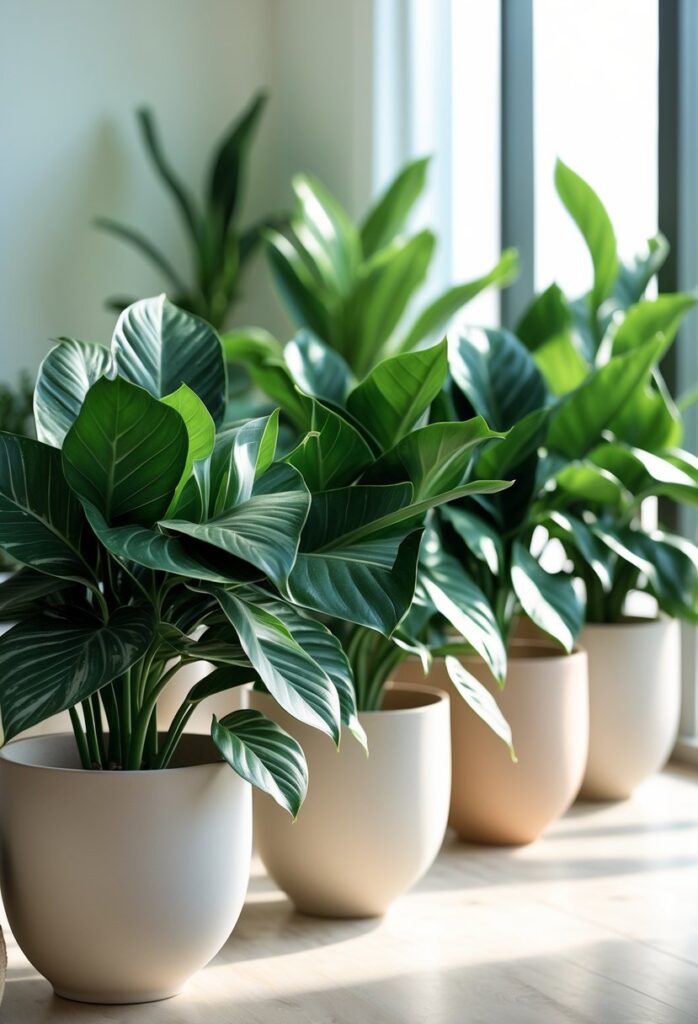
Sansevieria masoniana, known as the Whale Fin Plant, has large, paddle-shaped leaves that look like a whale’s fin. Its bold, wide leaves stand out in any plant collection.
This plant grows slowly and prefers indirect light. It can tolerate low water and does well in snug pots. It is a hardy plant that thrives on minimal care.
Variegated versions with cream-colored edges or marbled patterns are rarer and add extra visual interest. Propagation is possible but slow, usually done by leaf cuttings or dividing pups.
The Whale Fin Plant is a popular choice for those who want a unique, easy-to-care-for houseplant. It fits well in indoor spaces and needs only occasional watering. Learn more about its care at familyplanting.com/blog/whale-fin-snake-plant.
6) Sansevieria zeylanica (Ceylon Bowstring Hemp)
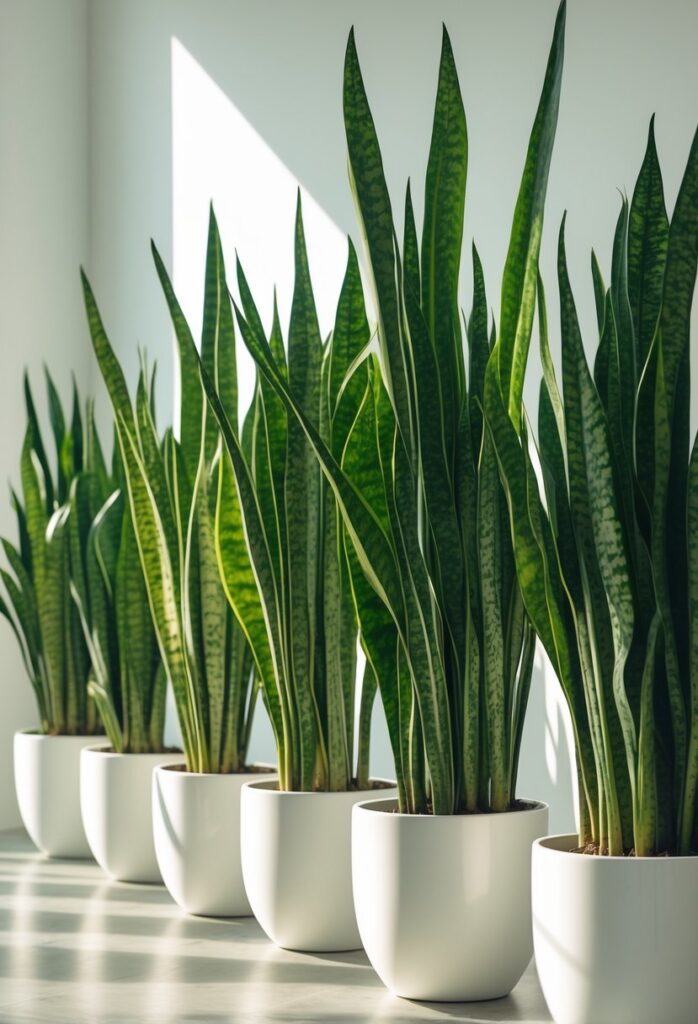
Sansevieria zeylanica, also called Ceylon Bowstring Hemp, is a hardy snake plant native to Sri Lanka and parts of India. It features long, sword-shaped leaves that grow upright from rhizomes. Its leaves are thick and fleshy, making the plant tolerant to dry conditions.
This plant grows slowly and can reach about 30 inches tall indoors. It adapts well to both bright and low light, including artificial lighting. Because of its resilience, it is a common choice for beginners.
Sansevieria zeylanica needs minimal watering. It is important to let the soil dry between waterings to avoid root rot. This plant is known for being low-maintenance and long-lasting, often living up to 10 years indoors under good care.
It can be grown alone or grouped with other plants. Its rugged look fits well with modern and traditional decor. For more details on how to grow and care for this plant, see this guide on Sansevieria Zeylanica care.
7) Air-purifying benefits of snake plants
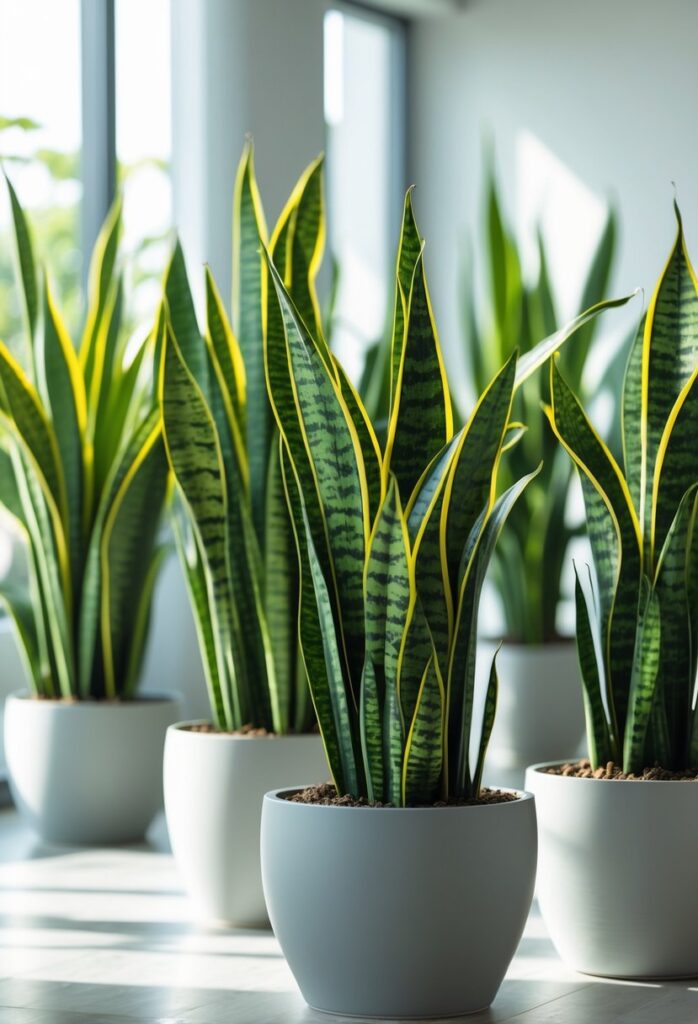
Snake plants are known for their ability to remove toxins from indoor air. They can filter common pollutants like benzene, formaldehyde, xylene, and toluene. This effect helps improve the quality of air in homes and offices.
These plants produce oxygen even at night, which is different from most plants. This makes them a good choice for bedrooms. Cleaner air can lead to better sleep and easier breathing.
Research shows snake plants can start reducing toxins in as little as 48 hours. While they cannot replace proper ventilation or air filters, they do add a natural air-cleaning effect. Their low maintenance also makes them easy to keep healthy indoors.
Different varieties of snake plants may vary in how much air they clean. Larger leaves tend to filter more air. Their combination of air-purifying ability and easy care makes them popular among indoor plant owners.
For more details on how snake plants clean the air, see the NASA Clean Air Study summary at Do Snake Plants Purify the Air? (NASA Study Explained).
8) Snake plants improve indoor air quality

Snake plants can help reduce indoor air pollution by absorbing toxins like formaldehyde, benzene, and xylene. These chemicals are common in homes and come from items like paint and cleaning products. By removing these harmful substances, snake plants contribute to a healthier living space.
They also release oxygen, which can improve air freshness. While the effect is not huge, having several snake plants in a room may slightly boost the oxygen levels. In sealed rooms, it is said that 6 to 8 snake plants can support survival by providing oxygen, though this scenario is rare.
Snake plants are low-maintenance and can thrive in low light, making them practical for improving indoor air in many homes. However, they should not replace mechanical air filters but can be part of a natural approach to cleaner air.
For more details on how snake plants filter toxins and improve air quality, visit NASA’s list of best plants to clean indoor air.
9) Low water requirements for snake plants

Snake plants have low water needs compared to many other houseplants. They store water in their thick leaves, allowing them to survive periods of drought. This makes them ideal for people who may forget to water regularly.
It is best to water snake plants only when the soil feels dry. Overwatering can cause root rot, which is harmful to the plant’s health. In most cases, watering once a month is enough.
Environmental factors like temperature and humidity affect how often snake plants need water. During warmer months, they may need more frequent watering. In cooler or more humid conditions, watering should be reduced.
Ensuring proper soil drainage is important to stop excess water from sitting around the roots. Using a well-draining potting mix helps prevent water buildup and keeps the plant healthy.
For more detailed advice on watering routines, see this Snake Plant Watering Guide.
10) Snake plants thrive in indirect light
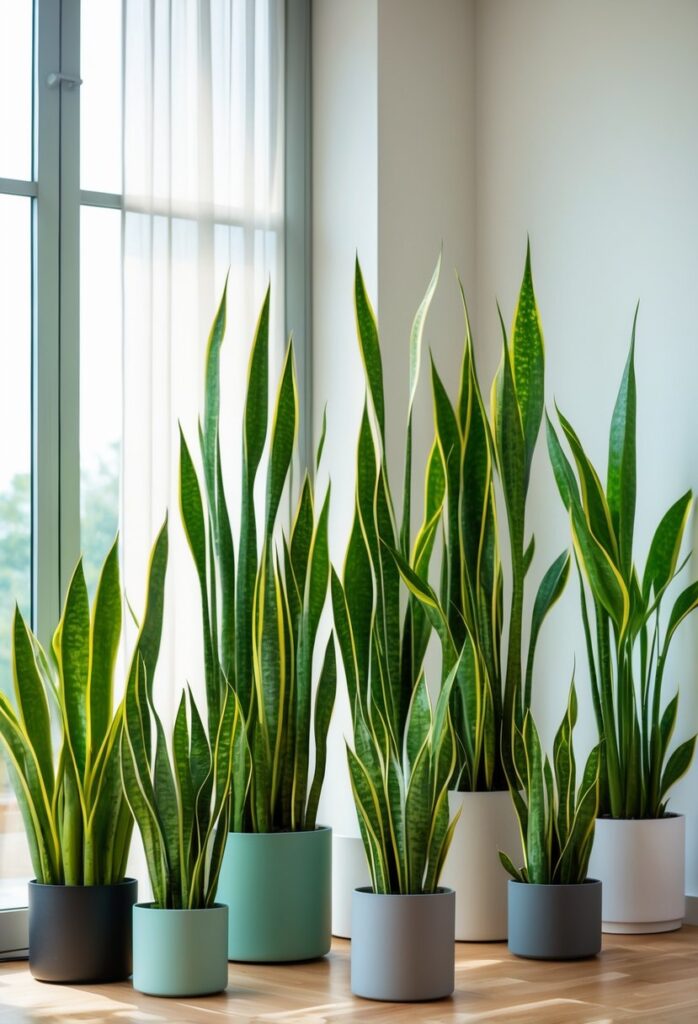
Snake plants grow best in bright, indirect light. They can handle some direct sunlight but too much can harm their leaves. Indirect light helps them stay healthy and keep their colors vibrant.
These plants can survive in low light but will grow more slowly. In shady spots, they may go dormant but usually do not die. For better growth, moderate light is recommended over very low light.
Indirect light allows snake plants to maintain a compact shape. It also prevents leaf burn, which can happen with strong direct sun. Placing them near a window with filtered light works well.
For more details about how snake plants do in light, see the guide on snake plant light needs from The Spruce.
11) Resistance to pests and diseases
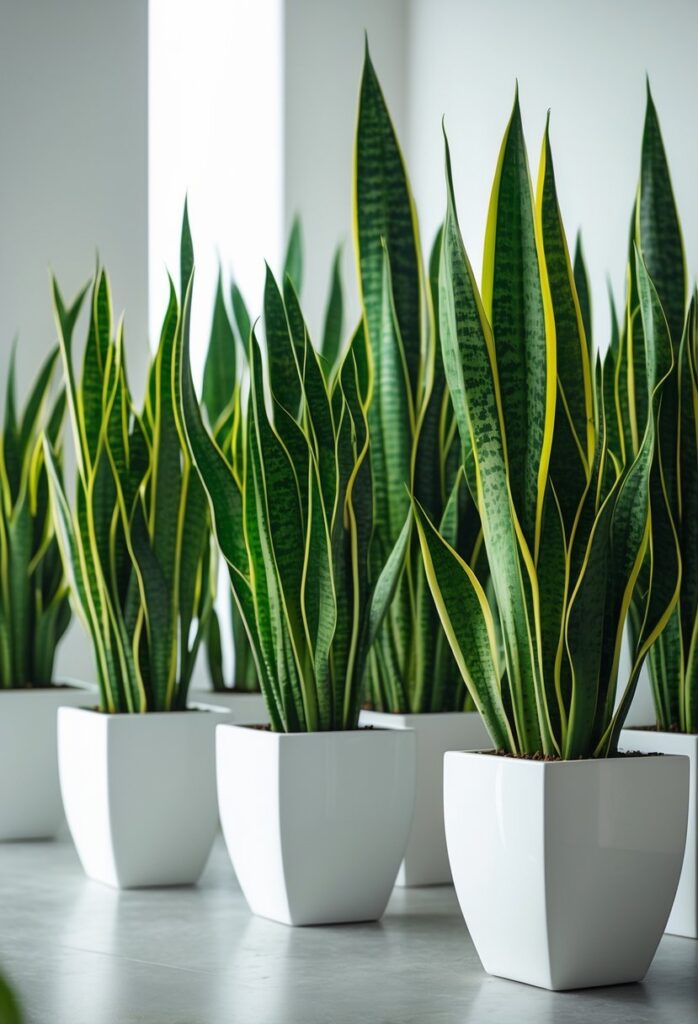
Snake plants are known for their strong resistance to many common pests. They produce bitter compounds that most bugs avoid, which helps keep them safe from insect damage. This natural defense makes them one of the easiest houseplants to maintain without pest problems.
Though generally tough, snake plants can still face issues if overwatered. Excess moisture can lead to root rot and attract pests like fungus gnats. Proper watering is key to preventing these problems and keeping the plant healthy.
Regular checks for signs of pests or disease are important. Early detection helps stop damage before it spreads. If pests do appear, treatments usually work well because snake plants tolerate care mistakes better than many other houseplants.
Their ability to resist pests and diseases makes snake plants popular for homes and offices. They require less use of chemical pesticides, which benefits indoor air quality and reduces maintenance effort. For this reason, they are often recommended as pest-resistant houseplants. More details about their resistance can be found in this article on pest-resistant snake plants.
12) Snake plants tolerate neglect well
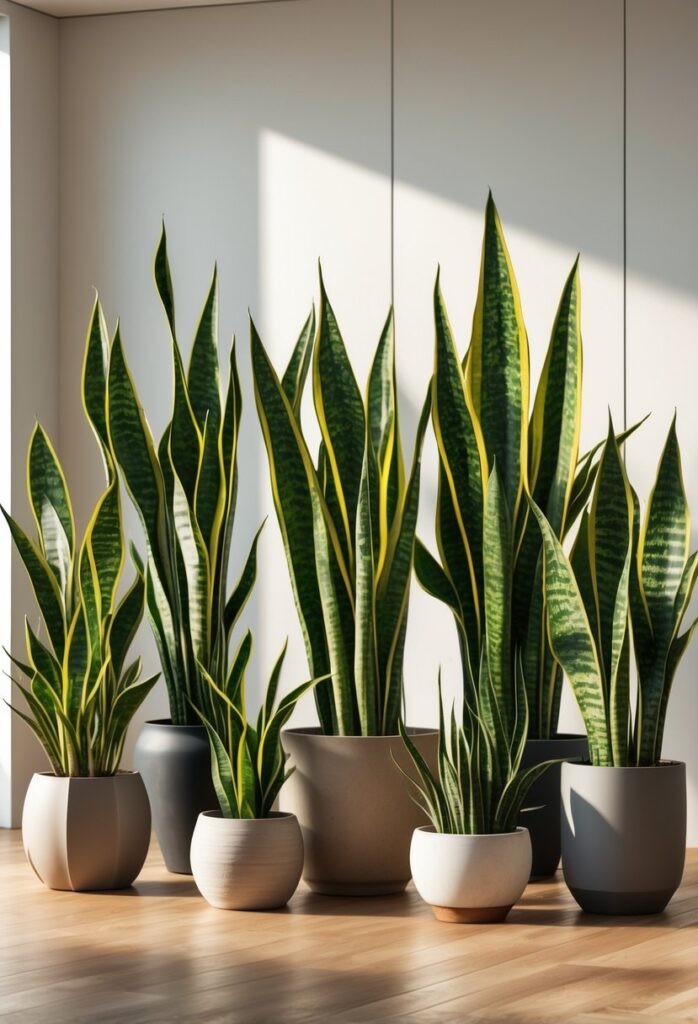
Snake plants are known for their ability to survive with little care. They store water in their thick leaves, which helps them last through dry periods without watering.
They can grow in low light, but they prefer bright, indirect sunlight. Even in dim corners or offices, they manage to keep healthy.
Missing a watering here and there usually does not harm them. In fact, overwatering is a bigger problem because it can cause root rot.
Their resilience makes them a popular choice for beginners or busy people. The plant bounces back easily after neglect, making it low-maintenance.
This toughness allows snake plants to be forgiving of common plant care mistakes. It’s a practical option for anyone wanting an easy, sturdy houseplant. More care tips can be found in this guide to snake plant care indoors.
13) Mildly toxic to pets, caution advised

Snake plants contain saponins, which are chemicals that protect the plant from insects and microbes. These compounds can cause mild to moderate stomach upset if a pet eats the leaves.
Pets like cats and dogs may show symptoms like vomiting, drooling, nausea, or diarrhea after chewing on the plant. These effects are usually uncomfortable but not life-threatening.
Pet owners should keep snake plants out of reach to avoid accidental ingestion. If a pet does eat part of the plant and shows symptoms, contacting a veterinarian or poison control is important.
While snake plants are popular for their low maintenance, their mild toxicity means caution is needed around curious pets. This helps ensure the safety of both the plant and the animal.
More about the mild toxicity of snake plants can be found in this article on snake plants toxicity to pets.
14) Ideal container and soil for snake plants

Snake plants need containers with good drainage. Pots with drainage holes prevent water from sitting at the bottom, which can cause root rot. A plastic or terracotta pot works well if it has holes.
The size of the container matters too. Using a pot just a little bigger than the root ball helps keep the soil from staying too wet. Large pots hold more soil, which can retain too much moisture.
They prefer fast-draining soil because they come from dry regions. A mix designed for succulents or cacti is best. This type of soil usually contains sand, perlite, or pumice to improve drainage.
Some growers use a blend of potting soil mixed with coarse sand or perlite to make it lighter and drain faster. This stops their roots from sitting in water, which snakes plants do not tolerate well.
More details about ideal soil and potting mixes can be found in guides like this one on how to repot a snake plant and choose the right soil.
15) Propagation via leaf cuttings and division
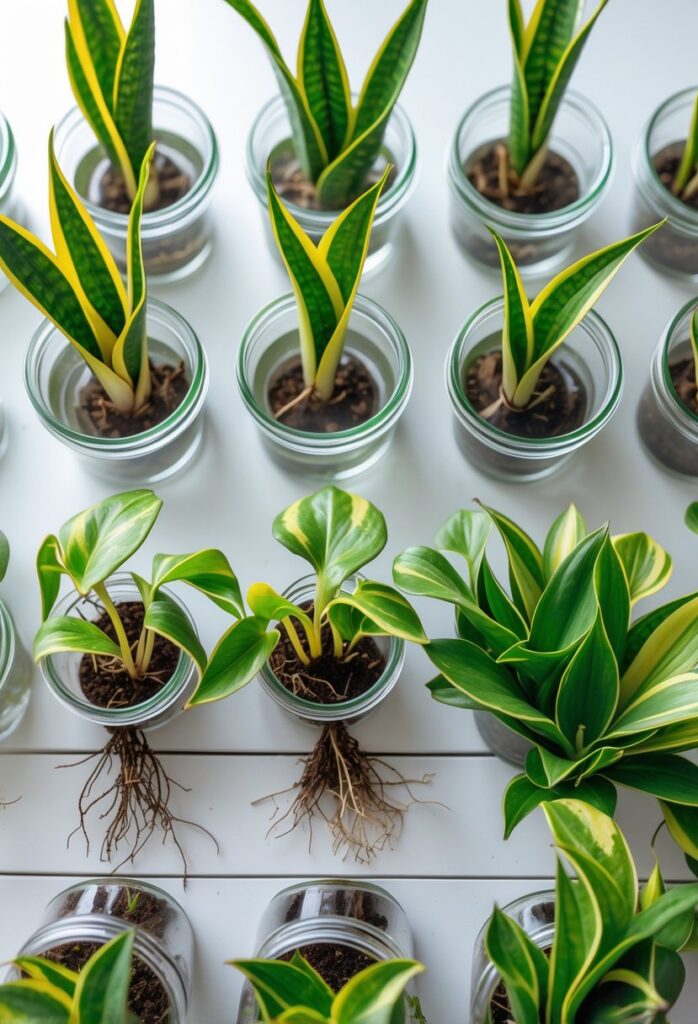
Propagation of snake plants can be done through leaf cuttings or division. Leaf cuttings involve cutting a healthy leaf into sections and placing them in soil or water. Each piece can grow roots and eventually form new plants.
Division is a faster method. It involves separating a mature snake plant into smaller groups, making sure each has roots. This method works well when repotting or when the plant becomes crowded.
Leaf cuttings take longer to grow new plants compared to division. They require patience and consistent care, like keeping soil moist or changing water regularly. Division gives quicker results and new plants ready for potting.
Both methods work best during spring and summer, when the plant is actively growing. Proper light and temperature help the cuttings or divisions establish roots faster.
These techniques allow snake plant owners to multiply their plants at home easily. For more detailed steps on propagation, see how to propagate a snake plant by leaf cuttings and division.
Key Benefits of Growing 15 Snake Plants
Growing multiple snake plants offers practical benefits that improve your living space. These plants help clean the air, require little care, and fit well with many styles of home decoration.
Air Purification Advantages
Snake plants are known for improving indoor air quality. They absorb toxins like formaldehyde, benzene, and xylene from the air, making rooms healthier.
Unlike some plants, snake plants continue to produce oxygen at night. This makes them excellent for bedrooms. They can help improve sleep quality by increasing oxygen levels while you rest.
Keeping 15 snake plants around means a stronger impact on air cleanliness. This can reduce allergy triggers and support better breathing. These air-purifying benefits are why snake plants are popular houseplants in offices and homes alike.
Low Maintenance Requirements
Snake plants are among the easiest plants to care for. They tolerate low light and do not need frequent watering, which prevents issues like root rot.
Their resilience means they can survive in different indoor environments, from bright rooms to shaded corners. This makes them ideal for busy or beginner gardeners.
Having 15 snake plants reduces the hassle of daily plant care. They need water only every two to six weeks, depending on humidity and temperature. This low upkeep saves time while keeping your space green and fresh.
Versatility in Home Decor
With their tall, sword-shaped leaves, snake plants add structure and vertical interest to rooms. They come in various sizes and patterns, making them easy to group or scatter around your home.
Snake plants suit modern, minimalist, and traditional styles. Their sleek look pairs well with pots made of ceramic, metal, or woven fibers.
Using 15 snake plants can create a striking visual effect or soften room corners. Their upright growth makes them perfect for narrow spaces, shelves, or floor displays without cluttering the area. This versatility supports many decorating goals while adding natural beauty.
For more details on snake plant benefits, visit this guide to snake plant benefits.
Care Tips for Multiple Snake Plants
When growing several snake plants together, the right conditions and care are essential to keep them healthy. Proper light, careful watering, and managing pests help prevent common problems and support strong growth.
Optimal Placement and Lighting
Snake plants need bright, indirect light to thrive but can tolerate low light. Grouped together, they should be placed where each plant gets enough light without direct sun.
Direct sunlight can scorch their leaves, so it’s best to avoid windows with harsh afternoon sun. Rotating the pots occasionally ensures even light exposure for all plants.
If natural light is limited, fluorescent grow lights can supplement. Aim for about 6-8 hours of indirect or filtered light daily to maintain vibrant leaf colors and steady growth.
Watering Guidelines
Snake plants prefer dry conditions and are prone to root rot if overwatered. When watering multiple plants, it’s important to check each pot’s soil moisture separately.
Water only when the top 2-3 inches of soil feel dry. Use a well-draining soil mix and pots with drainage holes.
Water less in winter, roughly once every 3-4 weeks, and increase slightly during the growing season. Avoid letting water sit in saucers or trays under the pots.
Tip: Water slowly to allow the soil to absorb moisture evenly without pooling.
Common Pests and Solutions
Snake plants are generally pest-resistant but can attract spider mites, mealybugs, and scale insects, especially indoors.
Look for fine webbing, small white cottony patches, or brown bumps on leaves. Prompt treatment helps avoid spread and damage.
Use a soft cloth dipped in soapy water or neem oil to wipe leaves and kill pests. For severe infestations, insecticidal soap sprays work well.
Regularly dust leaves and keep airflow good to prevent pests. Isolate affected plants to protect others in the group.
Monitoring plants weekly makes pest detection easier and keeps all snake plants healthy.
For detailed care guidance, see How To Care For Snake Plants.
Frequently Asked Questions
Snake plants offer many benefits indoors, including air purification and easy care. Proper care ensures a healthy collection, and some varieties are better for specific uses like improving air quality or adding unique visual appeal. Knowing which types to grow and how many to keep can help maximize their advantages.
What are the top benefits of having snake plants indoors?
Snake plants improve indoor air quality by filtering toxins like formaldehyde and benzene. They also release oxygen at night, which can enhance bedroom air.
Additionally, they are low-maintenance and tolerate low light, making them suitable for various indoor spaces. Their upright leaves add a decorative, natural look to any room.
How do I properly care for a collection of 15 snake plants?
A collection of 15 snake plants requires consistent watering only when soil is dry, usually every 2-4 weeks. Overwatering should be avoided, especially during winter.
Providing bright, indirect light will help most varieties thrive. It’s best to use well-draining soil and avoid cold drafts or extreme temperature changes.
Which snake plant variety is most effective for air purification?
Sansevieria trifasciata (Mother-in-Law’s Tongue) is one of the most effective for air purification. It is well-studied and known for filtering many common indoor pollutants.
Other varieties like Sansevieria masoniana (Whale Fin Plant) also contribute to air cleaning but may vary slightly in efficiency.
Can you list rare snake plant varieties with their names and images?
Rare varieties include:
- Sansevieria cylindrica (Cylindrical Snake Plant), known for its round, spear-like leaves.
- Sansevieria kirkii (Star Sansevieria), with star-shaped leaf patterns.
Images and details for these can be found in specialist plant guides and collectors’ sites focusing on snake plant diversity.
What is the optimum number of snake plants to have in a home for air quality?
For noticeable air quality improvements, experts recommend about 2-3 medium-sized snake plants per 100 square feet of indoor space.
Having 15 plants can provide strong air purification throughout a larger home or multiple rooms.
What are the different types of snake plants I can grow?
Popular types include Sansevieria trifasciata (Mother-in-Law’s Tongue), Dracaena trifasciata ‘Hahnii’ (Bird’s Nest Snake Plant), Sansevieria cylindrica, Sansevieria kirkii, and Sansevieria masoniana.
Each type has unique leaf shapes and growth habits, suited to different decor styles and growing conditions. More types are available for collectors who want variety in form and color.
For detailed lists and care tips, see the guide on 15 Different Types of Snake Plants.
